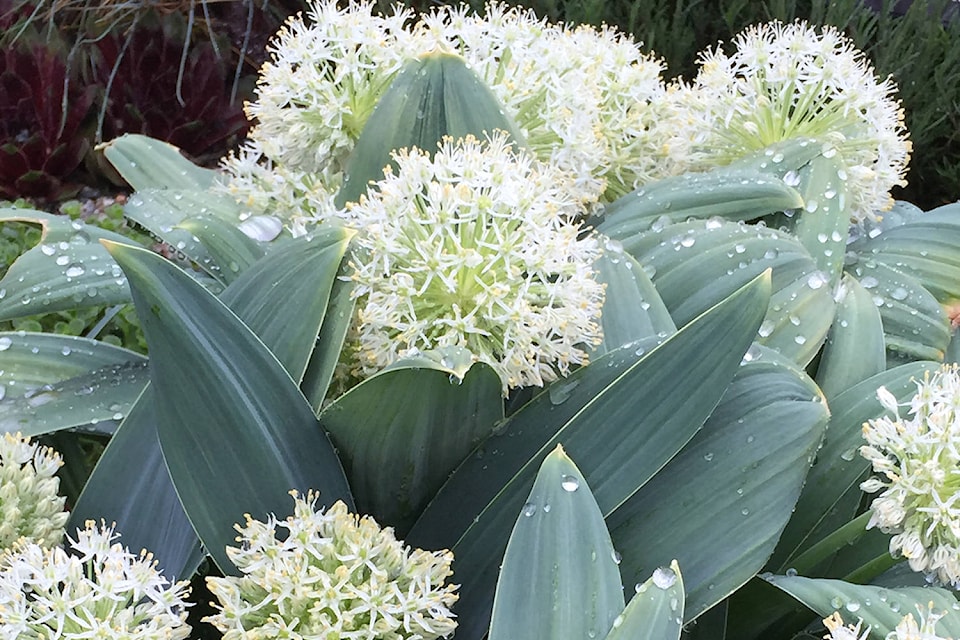Now that nights are cooler and days are shorter, good planting conditions have returned.
Fall plantings keep growing until frost and begin again when ground thaws.
By summer they have a bigger, more drought-resistant root system than if they were planted next spring.
All plants need water, for at least the first year, to get their roots established. However if you have a hard to water area, choose plants that are extremely drought-tolerant and plant in the fall so there’s less need for supplemental water next summer.
Find extremely drought-tolerant plants on the plant database at www.okanaganxeriscape.org. In the water category, select ‘dry’.
For best planting results:
1) Soak the root ball in a bucket of water until it sinks to the bottom.
Plants in pots are often dry inside - if roots are not saturated, water may run right through the planted root ball (like a dried out house plant). The plant can die from lack of water even if irrigated heavily.
2) Loosen the root ball with your fingers or make a quarter inch cut with a knife down the sides of the root ball in four places and an ‘x’ pattern across the bottom.
Otherwise roots will continue to circle around and plant may die from being pot bound even though planted in a garden.
3) Soak the planting hole twice, allowing water to drain away each time.
4) Set the plant in the hole so it ends up slightly lower than the surrounding soil, creating a shallow basin to capture water when it rains or you irrigate.
5) Fill the hole to level with top of root ball.
6) Soak plant then spread a layer of mulch around it.
The important thing in the fall is to make sure the root ball is moist before the ground freezes to ensure it stays frozen into the ground and won’t be vulnerable to being heaved out in a freeze-thaw cycle because it isn’t fully rooted in yet.
* * *
There are three good reasons to shop for plants in the fall:
• Plants that bloom in the fall and the late season ornamental grasses are often only available in late summer and fall.
• Nurseries generally have big sales in fall to clear out before winter.
• Spring bulbs are only available in fall.
Spring bulbs ensure an early, cheery start to the garden. They go dormant after blooming, leaving room for other plants that bloom later.
From early March to May, order of bloom in the water-wise garden is: snowdrops and winter aconite, snow crocus, grape hyacinth, scilla, and early, mid and late season tulips and narcissus, ornamental onions (alliums).
If you want an ever increasing show, choose bulbs that naturalize (as indicated on the packaging).
Alliums and narcissus are deer-proof.
To learn more come to OXA’s ‘Introduction to Xeriscape’ workshop: Saturday from 10 am to 2 pm on Sept. 23 in Kelowna or Oct. 14 in Penticton. Details and registration information are on the OXA website.
Gwen Steele is executive-director of the non-profit Okanagan Xeriscape Association.
